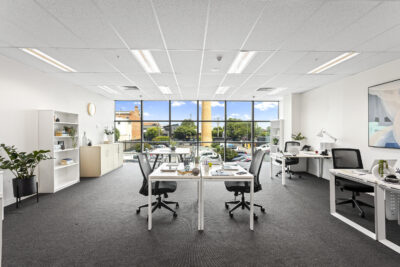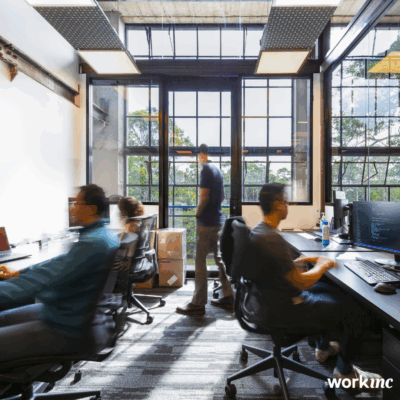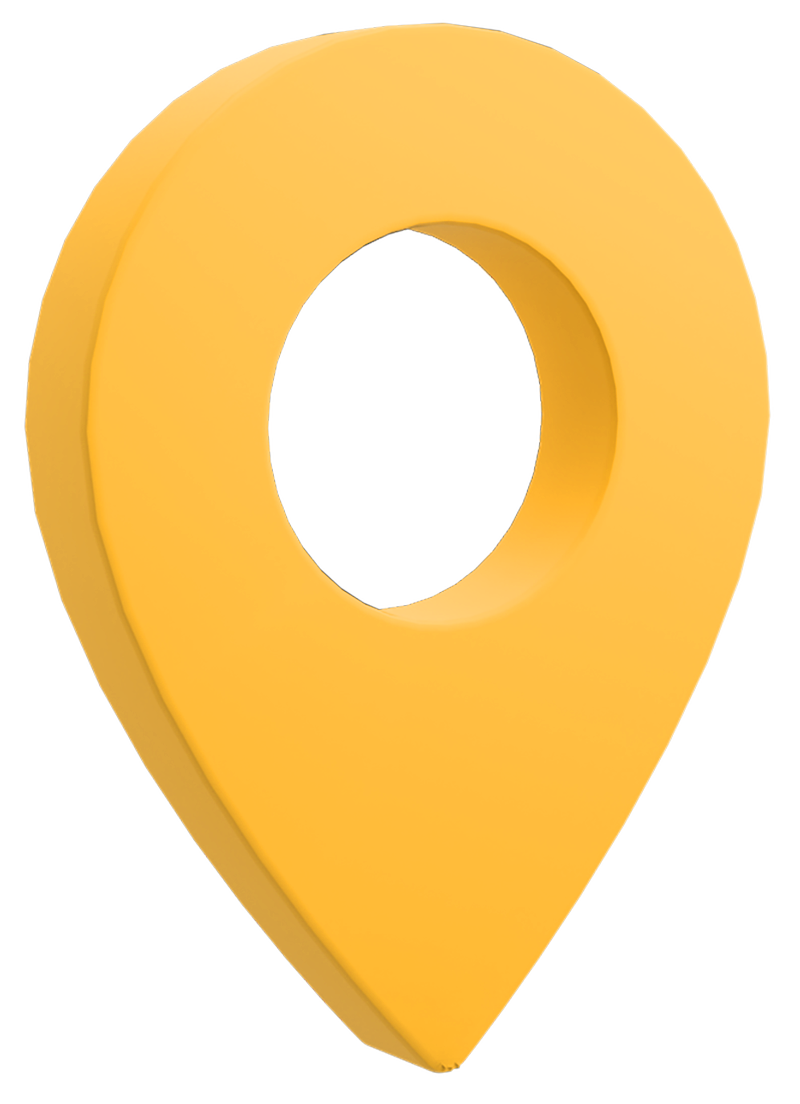The coworking space industry has revolutionised the way professionals work, blending flexibility, functionality, and innovation into one seamless experience. Whether you’re catering to creative professionals, remote workers, or small businesses, the right coworking space design ideas can transform an ordinary space into a vibrant, productivity-boosting hub. From leveraging natural light to creating private offices and flexible event spaces, coworking office space design trends are evolving rapidly to stay competitive in the modern workplace.
Here are 12 coworking space design ideas that inspire creativity, encourage collaboration, and foster a welcoming environment tailored to diverse working styles.
1. Biophilic Design with Natural Elements

Image source: https://flexfind.com.au/listing/50-albert-street-auckland/
Incorporating biophilic design into coworking spaces helps create a calming atmosphere that enhances productivity. This approach focuses on integrating natural materials like wood, stone, and greenery. Ample natural light through large windows paired with lush indoor plants not only improves air quality but also reduces stress.
To amplify this concept, consider installing green walls, using reclaimed timber furniture, or featuring nature-inspired artwork. Independent workers and coworking members alike will appreciate the peaceful environment created by these natural touches.
2. Flexible Workspaces for Diverse Needs
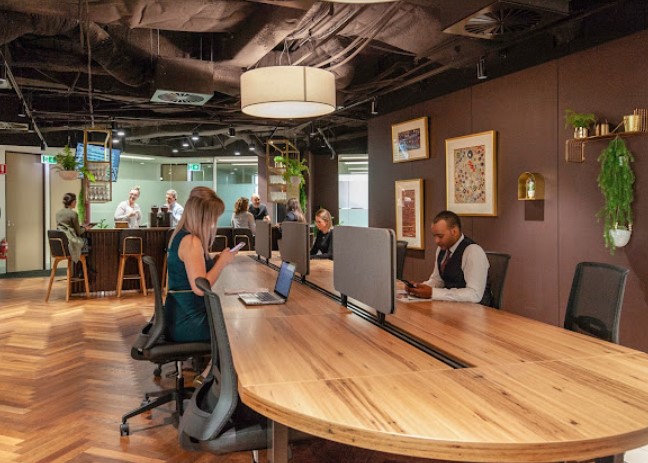
Image source: https://flexfind.com.au/listing/91-king-william-street-adelaide/
Coworking spaces thrive when they cater to various working styles. Design areas with modular furniture that can be easily rearranged to create collaborative zones, quiet zones, or semi-private open areas. Providing options like shared desks, dedicated desks, or private rooms allows coworking members to choose the setup that suits their tasks best.
Flexible workspaces can also include quiet pods for focused work and collaborative spaces for brainstorming sessions. This adaptability enhances the user experience and attracts creative professionals and remote workers alike.
3. Embracing Open Workspaces with Private Zones

Image source: https://flexfind.com.au/listing/36-38-gipps-street-collingwood/
While open workspaces encourage collaboration and networking, having designated private spaces is essential for focused work. Incorporate enclosed offices, quiet areas, and phone booths for private calls or meetings. This balance between open and private areas ensures the space caters to diverse professional needs.
Creative coworking space design thrives on versatility, so including flexible partitions or semi-private open areas can help meet the needs of your target audience.
4. Incorporating Natural Light and Ergonomic Furniture
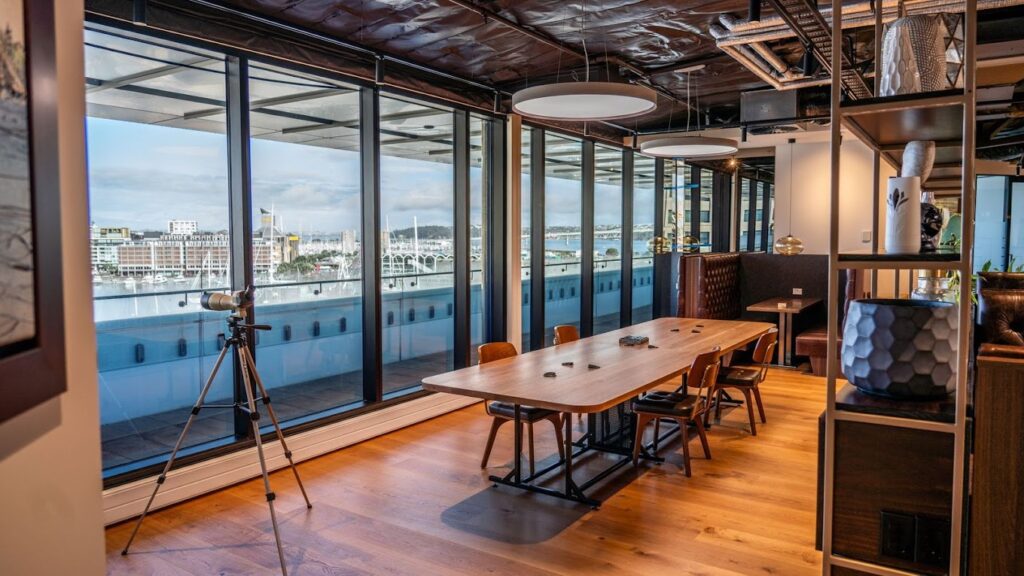
Image source: https://flexfind.com.au/listing/139-quay-street-auckland/
Spaces that prioritise ample natural light are not only visually appealing, but also boost mood and energy efficiency. Position workstations near large windows and use sheer curtains to diffuse light while reducing glare. Pair these efforts with ergonomic furniture like adjustable desks and comfortable chairs to create a supportive and welcoming environment.
Modern coworking office spaces should also feature power outlets near seating options to accommodate digital nomads and working professionals.
5. Private Offices for Small Businesses

Image source: https://flexfind.com.au/listing/20-martin-place-sydney/
Dedicated private offices within coworking spaces are a must for small businesses and professionals who need quieter spaces. These enclosed areas offer privacy for client meetings, focused work, and small team collaborations.
By offering customisable interior design options for private offices, coworking spaces can attract startups and small businesses looking for flexible lease terms and a professional image.
6. Lounge Areas for Relaxation and Networking
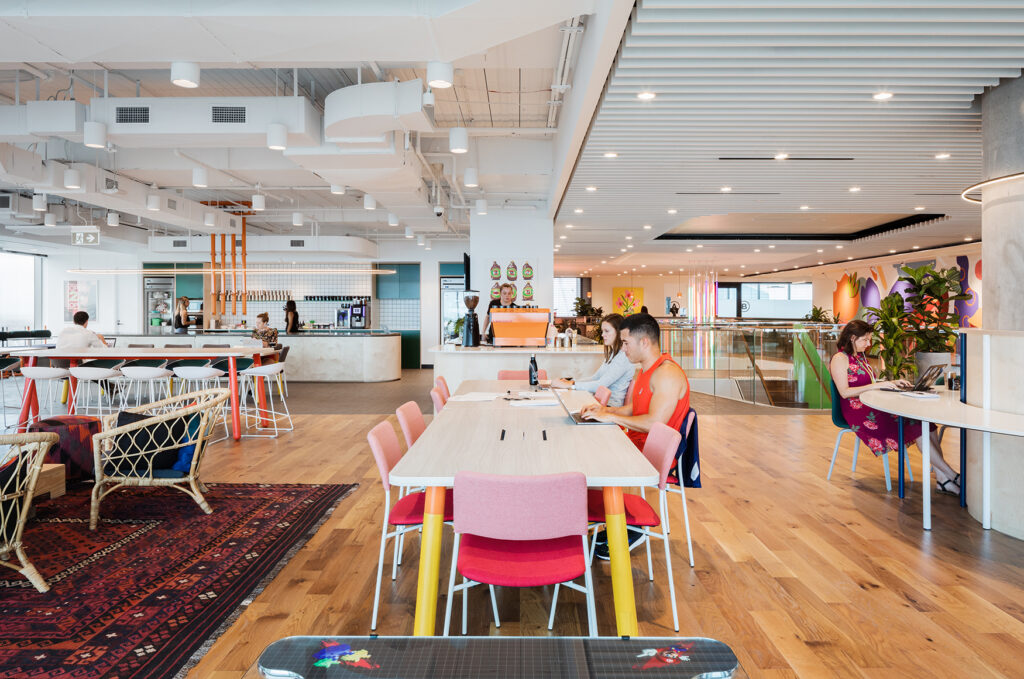
Image source: https://flexfind.com.au/listing/161-castlereagh-street-sydney/
Lounge areas are more than just gathering places; they foster a sense of community and encourage networking events. Design a welcoming lounge with comfortable seating, a calming atmosphere, and modern amenities like high-speed WiFi. Add creative touches such as local art or quirky features like a retro phone booth to give your space personality.
Relaxation areas that provide a break from the hustle also promote work-life balance and appeal to coworking members seeking a holistic workspace experience.
7. Collaborative Zones and Event Spaces

Image source: https://flexfind.com.au/listing/580-george-street-sydney/
Dedicated collaborative spaces within a coworking office encourage brainstorming sessions, teamwork, and idea sharing. Use modular furniture that can be rearranged to create event spaces or larger meeting rooms for networking events or workshops.
Coworking spaces with flexible event space layouts can serve as a dynamic hub for professional growth while fostering a community-focused environment.
8. Small Coworking Space Design Ideas for Urban Areas
For coworking spaces with limited square footage, efficient layouts are key. Use compact modular furniture, vertical storage solutions, and multi-functional furniture like foldable desks or convertible chairs.
Incorporating large windows for natural light and mirrors to create the illusion of space can make small coworking spaces feel more open and inviting.
9. Quieter Spaces with Soundproofing
Noise can be a major distraction in coworking spaces. Designated quiet zones or quiet pods with soundproofing ensure a distraction-free environment for focused work. Use acoustic panels, carpets, and soft furnishings to absorb sound and create a more serene atmosphere.
10. Creative Coworking Spaces with Local Inspiration
Taking inspiration from the local culture adds a unique touch to coworking spaces. Showcase local artwork, use materials native to the area, or design themes around the city’s history. For example, a coworking space in New Orleans might incorporate jazz-inspired murals or reclaimed materials from the region.
This integration of local culture not only enhances the aesthetic but also creates a sense of belonging for coworking members.
11. Sustainable and Energy-Efficient Designs
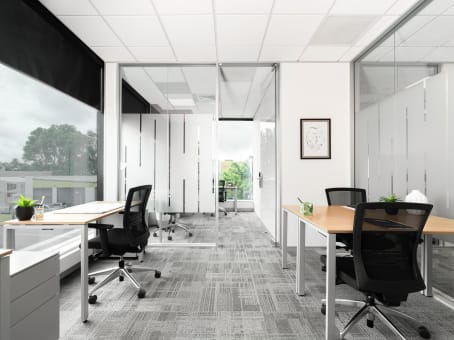
Image source: https://flexfind.com.au/listing/61-constellation-drive-rosedale/
Sustainability is a growing priority for coworking space design. From using energy-efficient lighting and renewable energy sources to incorporating water-saving fixtures and recycling programs, these practices reflect a commitment to eco-friendliness.
Green roofs, living walls, and smart technology for controlling energy consumption are contemporary additions that benefit both the environment and operational efficiency.
12. Tech-Integrated Meeting Rooms
Modern coworking spaces must include technology-friendly meeting rooms with video conferencing tools, interactive screens, and seamless high-speed WiFi. These spaces cater to remote workers and teams needing cutting-edge solutions for hybrid collaboration.
Conclusion
Coworking space design is more than aesthetics; it’s about creating an environment that encourages collaboration, inspires creativity, and supports diverse working styles. By incorporating elements like natural light, ergonomic furniture, and flexible layouts, you can create a coworking space that meets the needs of today’s professionals.
Whether you’re designing for independent workers, small businesses, or digital nomads, these coworking space design ideas will help you stay competitive while fostering a sense of community. Start transforming your coworking office into a modern workspace that enhances productivity and drives success.
